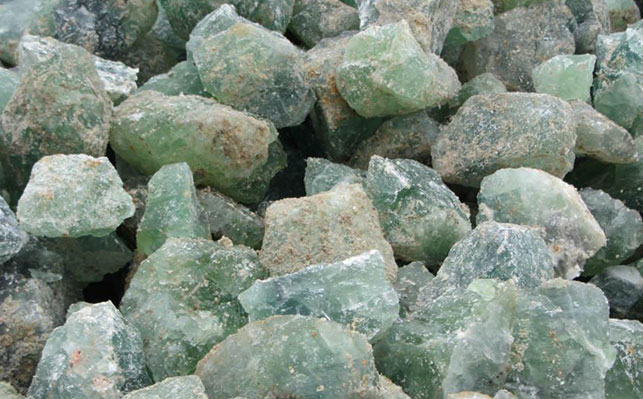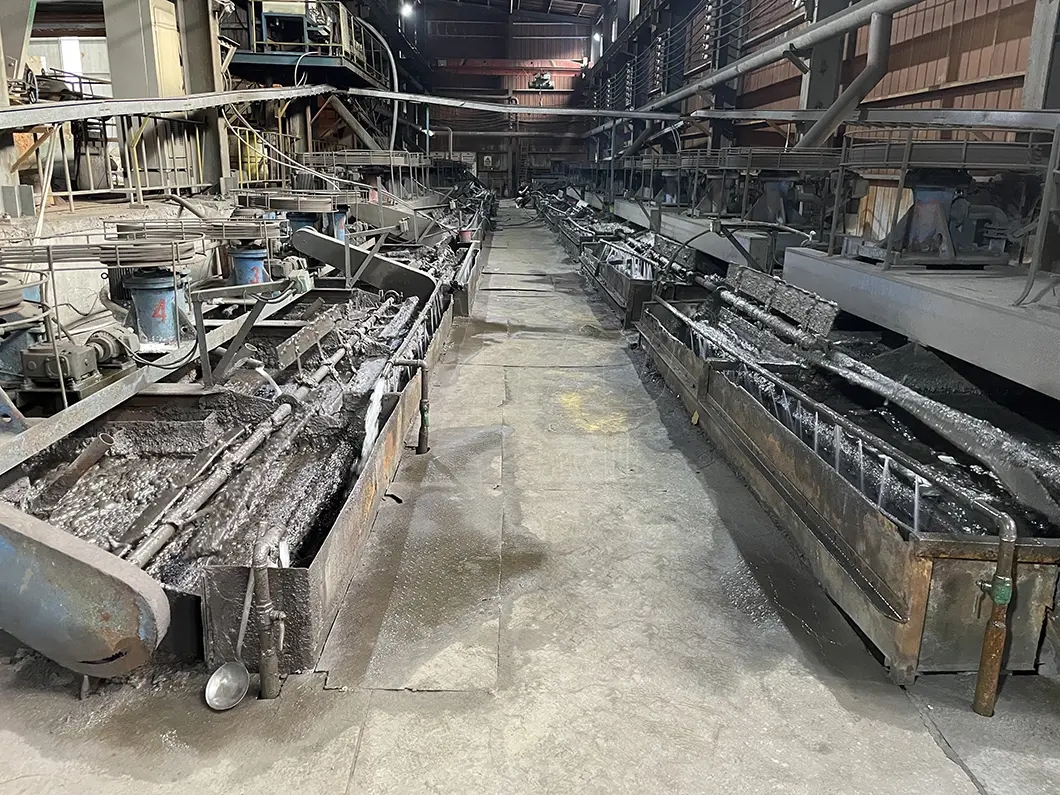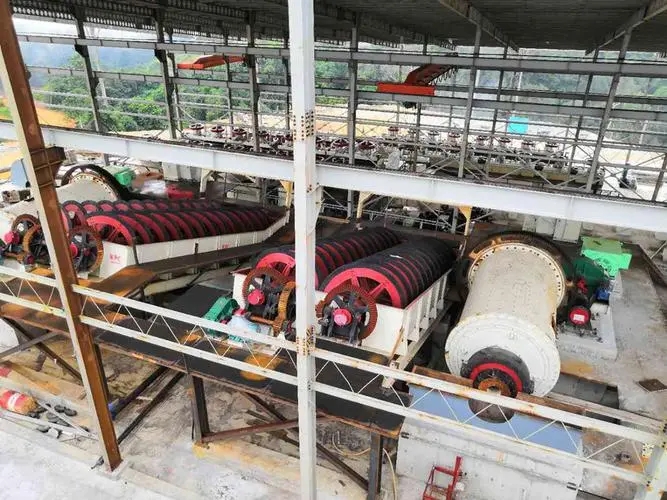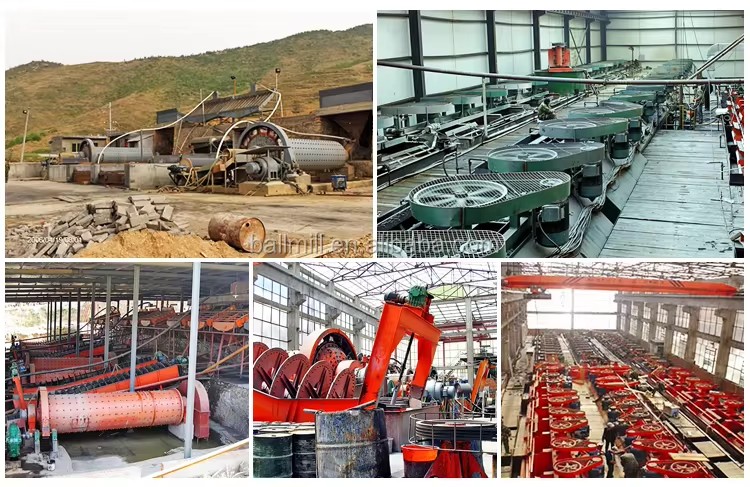Industry news
Introduction to the main types of fluorite and fluorite beneficiation methods
Fluorite is an important non-metallic mineral raw material widely used in industries such as chemical, steel, aluminum smelting, ceramics, etc. It is the main raw material for preparing fluorine. With the development of technology, the use of fluorite in high-tech industries is gradually increasing, becoming an important strategic mineral resource. The beneficiation and separation technology of fluorite is an important means to improve the grade of fluorite and is also the foundation of fluorine chemical technology. According to different types of fluorite, their beneficiation methods also vary. This article will take you to understand the main types of fluorite and their beneficiation methods.

According to the different composition of its coexisting minerals, fluorite can be roughly divided into seven types: single type fluorite, quartz type fluorite, sulfide type fluorite, calcite type fluorite, barite type fluorite, siliceous rock type fluorite, and carbonate type fluorite.
1. Monotypic fluorite
Single type fluorite is almost composed of a single fluorite mineral and also contains a small amount of quartz and calcite, mostly produced in a vein like manner. The grade of calcium fluoride is generally between 35% -40%, and a few fluorites greater than 65% can be directly used as smelting grade fluorite resources, but the reserves are small and the development level is high.
Due to the simple composition of the ore, a single fluorite ore generally only requires the use of alkaline oleic acid for simple flotation roughing sweeping several times of selection to obtain high-grade concentrate products.
2. Quartz type fluorite
Quartz type fluorite is mainly composed of fluorite and quartz, with a content of up to 80% to 90%. It contains small amounts of calcite, barite, and sulfides. The mineral composition of quartz type fluorite is relatively simple and easy to select, but it is easy to mix quartz concentrate into fluorite concentrate, increasing the content of silica. Therefore, reducing silica in concentrate has become a key focus of quartz type fluorite selection.
Quartz type fluorite is generally selected by flotation method, and grinding operation has a significant impact on its selection indicators. Fine grained embedded quartz type fluorite generally adopts a stage grinding stage selection process to ensure the dissociation of quartz and fluorite monomers without causing overgrinding. During flotation, sodium carbonate is used as a pH adjuster, oleic acid and oxidized paraffin soap can be used as collectors, and water glass can be used as an inhibitor. High grade fluorite concentrate can be selected through multiple selections.

3. Sulfide type fluorite
Sulfide type fluorite has similar mineral composition to quartz type fluorite, but sulfide type fluorite contains more heavy metal sulfides. When developing, not only should the recovery effect of fluorite be considered, but also the comprehensive recovery of other metal minerals.
For this type of fluorite mineral, the method of priority flotation of metal sulfides followed by flotation of fluorite is generally adopted. Sulfide collectors are used for metal sulfides, while fatty acid collectors are used for fluorite. On the basis of flotation technology, methods such as roasting and leaching can also be used to separate metal sulfides and fluorite.
4. Calcite type fluorite
The main minerals of calcite type fluorite are calcite and fluorite, with a calcite content of over 30%. It also contains metal sulfide minerals such as galena, sphalerite, and pyrite.
Calcite and fluorite are both calcium containing minerals with similar physical and chemical properties, making separation difficult. Under different slurry pH conditions, inhibitors such as water glass, salted water glass, acidified water glass, sodium hexametaphosphate, lignosulfonate, dextrin, tannin, and tannin extract can be used to inhibit calcite. Fatty acid collectors are used as fluorite collectors to achieve the separation of calcite and fluorite.

5. Barite type fluorite
Barite type fluorite is mainly composed of barite and fluorite, with a content of between 10% and 40%. Barite and fluorite are vertically zoned in the ore body and are associated with pyrite, galena, sphalerite, and a small amount of calcite.
The floatability of barite and fluorite is similar, and mixed flotation is generally used. Sodium carbonate is used to adjust the pH value, and water glass is used as an inhibitor to obtain a mixed concentrate of barite and fluorite, which is then separated by flotation.
6. Siliceous rock type fluorite
Siliceous rock type fluorite is formed by sedimentation, among which fluorite is generally distributed in siliceous rocks such as shale, mica quartz schist, quartzite, etc. in the form of fine-grained disseminated, cemented, banded micro layered, block shaped, and flat lens shaped.
This type of ore has a large amount of primary slime and uneven embedded particle size. The concentrate obtained by conventional flotation methods has a high silicon dioxide content. The method of adding reagents for pre-treatment in the grinding stage can be used to improve it, and then flotation can effectively suppress the silicate gangue minerals in this type of mineral.

7. Carbonate type fluorite
Carbonate fluorite is also formed by sedimentation. Fluorite is distributed in fine-grained form in limestone and marble, and forms a granular co embedded or metamorphic structure with calcite or dolomite. Some form striped, banded, micro layered to thin layered structures. The main minerals are fluorite and calcite, with a calcium carbonate content of around 30%.
Due to the similar flotation properties of fluorite and calcium carbonate, this type of fluorite is difficult to select. When using fatty acids as collectors, high-temperature pulping treatment at 50-60 ℃ and the addition of calcium inhibitors are also required. However, this method has high investment costs, occupies a large area, and production costs.
Categories
News
Contact Us
Contact: XKJ GROUP
Phone: 0086 138 3714 0277
Tel: 0371-65751333
E-mail: sales01@xkjgroup.com
Add: Xing yang city, Zheng zhou city, Henan province, China